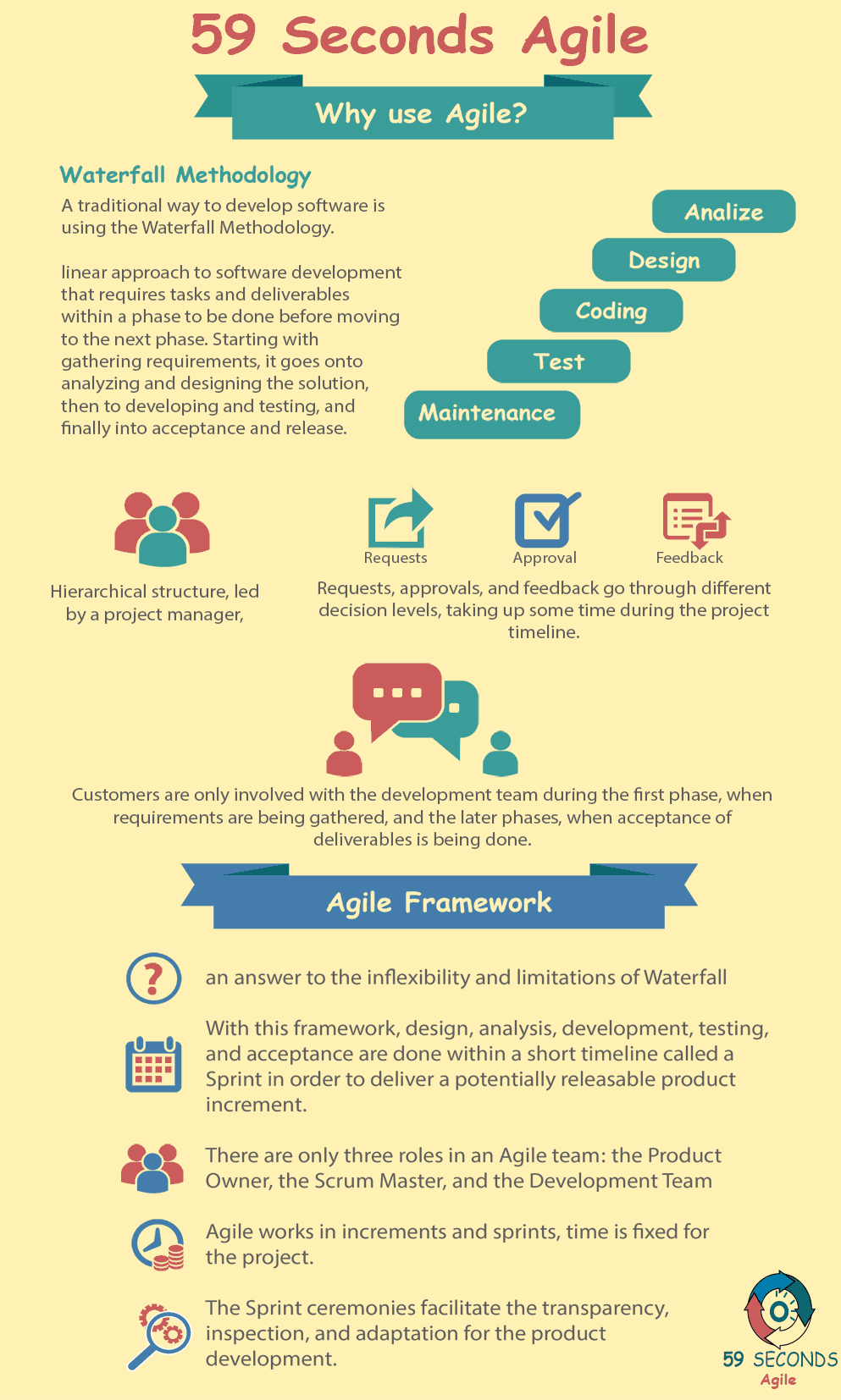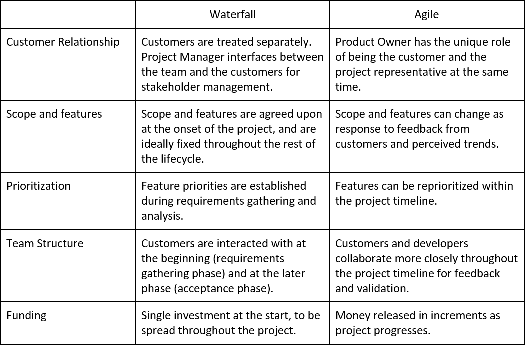
Why Use Agile As A Product Owner?
With the speed of change in trends and demands, digital transformation and business agility have become necessities for every company to stay competitive. Whether you’re building an app or innovating a process, the cornerstone of developing the product is the project management approach. It needs to solve the right problem with the right solution for the right people at the right time at the right cost. Therefore, it is crucial to know the reasons behind choosing a project management framework, and how to go about it.
Waterfall Projects
A traditional way to develop software is using Waterfall. Taken from the construction and manufacturing processes, it is a linear approach to software development that requires tasks and deliverables within a phase to be done before moving to the next phase. Starting with gathering requirements, it goes onto analyzing and designing the solution, then to developing and testing, and finally into acceptance and release.
A project team using Waterfall is usually set up in a hierarchical structure, led by a project manager, then the development team next in line. Requests, approvals, and feedback go through different decision levels, taking up some time during the project timeline. Customers are only involved with the development team during the first phase when requirements are being gathered, and the later phases, when acceptance of deliverables is being done.

In Waterfall, the scope is fixed by a contract, leaving little room for error and making defect fixing done too late. For example: if there is a misunderstanding in a requirement from the analysis phase, this could lead to the wrong module being developed, consequently taking up time during the testing phase to accommodate fixes and changes.
Agile Frameworks
As an answer to the inflexibility and limitations of Waterfall, different software engineers came up with the Agile approach to software development. With this framework, design, analysis, development, testing, and acceptance are done within a short timeline called a Sprint in order to deliver a potentially releasable product increment. This allows the team to produce working software in a shorter amount of time that can be built upon further down the project timeline.
Our Favourite Agile Books
We found these books great for finding out more information on Agile Scrum:
There are only three roles in an Agile team: the Product Owner, the Scrum Master, and the Development Team. A project manager from Waterfall would typically take over a Product Owner role if they prefer to manage the product direction, or the Scrum Master role if they prefer to coach the team. A developer is anyone needed to make up the product – programmer, tester, analyst, designer. There is no hierarchy in an Agile team as everyone brings equal value to the project, and customers are closely involved in a faster feedback loop.
Because Agile works in increments and sprints, time is fixed for the project. If a sprint is agreed to be for two weeks, product increments will be delivered every two weeks. The Sprint ceremonies facilitate the transparency, inspection, and adaptation for the product development. If certain changes in requirements and priorities are perceived to be valuable, the Product Owner can re-order the feature delivery in the project backlog. The flexibility of Agile makes it a great framework for responding to changes in business needs and trends.
Waterfall vs. Agile?
Project managers often decide between choosing Waterfall or an Agile framework for product development. Because the role of a project manager in a Waterfall project will be different in an Agile project, it would be helpful to know some key differences in their roles and responsibilities.


